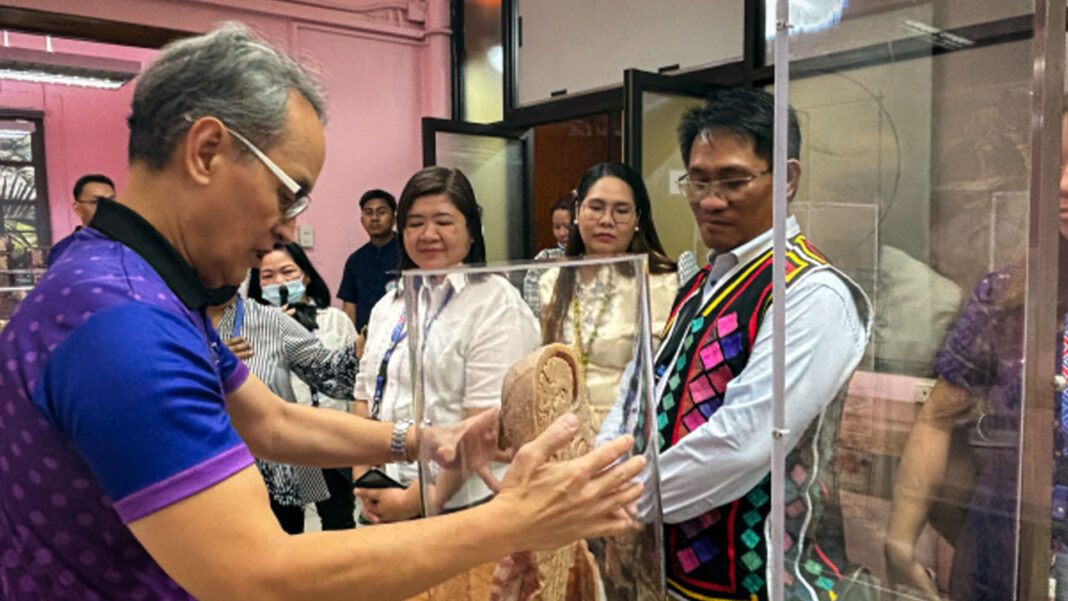The University of the Philippines Manila (UP Manila) and the Technical Education and Skills Development Authority (TESDA) on Monday launched new competency standards to strengthen the country’s medical education system.
The two new qualifications are Cadaver Preservation Services Level III and Academic Simulation Services Level III, which aim to professionalize the technical staff who assist future healthcare workers in anatomy laboratories.
TESDA Secretary Jose Francisco Benitez said the initiative recognizes the indispensable contributions of anatomy and simulation laboratory technicians in shaping medical education.
“Before there’s a doctor in the operating room, there’s a technician in the anatomy lab. During every simulation, there’s someone setting up the tools, fixing the systems and keeping things running when no one’s watching,” Benitez was quoted in a news release as saying in his speech during the launch at UP Manila’s Sports and Wellness Center.
“Today, TESDA and UP Manila stand together to say they are no longer invisible. Their work, their skills, their service — kita na, kilala na at kinikilala na natin ngayon (it is seen, it is known and it is recognized now),” he added.
The move marked the first time the government developed official competency standards for Anatomy Laboratory and General Laboratory Technician education, paving the way for standardized training and qualifications in support of medical and health sciences programs.
The Cadaver Preservation Services Level III program will train learners in the ethical handling, preservation and management of cadavers for academic and research use.
Graduates may serve as cadaver care technicians, anatomy laboratory technicians or anatomic embalmers.
Meanwhile, the Academic Simulation Services Level III program focuses on the operation and management of simulation-based learning facilities used in health sciences education.
Successful trainees may pursue careers as simulation technicians or simulation operations specialists.
Benitez noted that as the number of medical schools continues to grow under the Doctor Para sa Bayan Act, there is a parallel need to ensure the availability of qualified laboratory and simulation staff who help deliver quality education.
The law, Republic Act 11509, establishes a “medical scholarship and return service that will help deserving medical students pursue medical education and training in the field of health and medicine” and who shall eventually “render services in government public health offices or government hospitals in their hometown or in any municipality in their home province or in any underserved municipality in any province, as part of their integration into the public health and medical service system.”
TESDA’s 2025 TVET (Technical-Vocational Education and Training) Skills Insights Report, titled “Behind the Scenes of Care: Labor Insights into the Auxiliary Health Workforce,” stated that each new medical school requires three to four laboratory technicians to operate effectively.
To respond to this need, TESDA and UP Manila identified six priority areas for TVET development: Anatomy Laboratory Technician, General Laboratory Technician, Cadaver Preservation, Cadaver Soft Embalming, Academic Simulation Assistant, and Simulation Technician.
The initiative forms part of the implementation of a memorandum of understanding (MOU) signed by TESDA and UP Manila in September 2024, which outlined collaboration on standards development, skills training and enterprise-based learning.
Following the MOU, TESDA held consultations with officials from UP Manila and the Philippine General Hospital, starting December 2024, to identify challenges in the field.
These included the shortage of plantilla positions, low pay, and the lack of standard qualifications for laboratory and simulation personnel.
UP Manila Chancellor Michael Tee welcomed the launch, noting that it fulfills the university’s long-standing call to professionalize support personnel in health sciences education.
“As the prime mover for simulation-based and technology-driven health sciences education, UP Manila will ensure that support staff in health sciences courses are properly trained and recognized in the academic community,” Tee said.
UP Manila faculty members Dr. Rafael Bundoc of the Department of Anatomy and Dr. Maria Julieta Germar, a leader in simulation-based learning, led the development of the training modules for the new programs.
TESDA said the development of competency standards is expected to strengthen the backbone of medical education by aligning technical training with higher learning and ensuring that the health workforce behind every classroom and laboratory is properly equipped, visible, and valued. (PNA)


